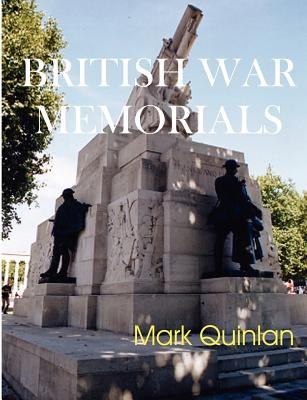
- We will send in 10–14 business days.
- Author: Mark Quinlan
- Publisher: New Generation Publishing
- ISBN-10: 0755201868
- ISBN-13: 9780755201860
- Format: 18.9 x 24.6 x 2.3 cm, minkšti viršeliai
- Language: English
- SAVE -10% with code: EXTRA
Reviews
Description
This book examines Britain's war memorials, commencing with the white marble statuary erected in Britain's cathedrals in the 19th century to commemorate great commanders, through to the utilisation of bronze casting techniques in the 19th century to commemorate significant military figures and regiments. The British memorialisation process would be given added impetus by the magnitude of the nation's losses in the Great War. Immediately after that war, memorials would be erected by the Imperial War Graves Commission, schools, universities, businesses, clubs, municipal authorities, regiments or formations of the armed forces, or in some exceptional cases by the nation to commemorate a particular individual. Some communities erected no memorial at all. As will be seen in this study, the forms employed were limited only by the ingenuity of the individuals and organising committees concerned. They would include: literal statuary in stone and bronze, memorial chapels, ornamental fountains, plaques, Celtic crosses, Crosses of Sacrifice, obelisks, screen walls, clock towers, brasses, steam locomotives, musical instruments, cottage hospitals, retirement homes, rolls of honour and books of remembrance. The forms employed after the Second World War would include: bombed out churches, aircraft, boulders and that curious phenomenon, the war memorial bus stop. There are some 70,000 war memorials in the UK alone and the process goes on to the present day, with memorials still being erected to the fallen of a number of conflicts. Through a representative range of examples, this study explores the background, politics, financing, policy issues, organisations and personalities associated with the memorialisation process.
EXTRA 10 % discount with code: EXTRA
The promotion ends in 23d.18:39:35
The discount code is valid when purchasing from 10 €. Discounts do not stack.
- Author: Mark Quinlan
- Publisher: New Generation Publishing
- ISBN-10: 0755201868
- ISBN-13: 9780755201860
- Format: 18.9 x 24.6 x 2.3 cm, minkšti viršeliai
- Language: English English
This book examines Britain's war memorials, commencing with the white marble statuary erected in Britain's cathedrals in the 19th century to commemorate great commanders, through to the utilisation of bronze casting techniques in the 19th century to commemorate significant military figures and regiments. The British memorialisation process would be given added impetus by the magnitude of the nation's losses in the Great War. Immediately after that war, memorials would be erected by the Imperial War Graves Commission, schools, universities, businesses, clubs, municipal authorities, regiments or formations of the armed forces, or in some exceptional cases by the nation to commemorate a particular individual. Some communities erected no memorial at all. As will be seen in this study, the forms employed were limited only by the ingenuity of the individuals and organising committees concerned. They would include: literal statuary in stone and bronze, memorial chapels, ornamental fountains, plaques, Celtic crosses, Crosses of Sacrifice, obelisks, screen walls, clock towers, brasses, steam locomotives, musical instruments, cottage hospitals, retirement homes, rolls of honour and books of remembrance. The forms employed after the Second World War would include: bombed out churches, aircraft, boulders and that curious phenomenon, the war memorial bus stop. There are some 70,000 war memorials in the UK alone and the process goes on to the present day, with memorials still being erected to the fallen of a number of conflicts. Through a representative range of examples, this study explores the background, politics, financing, policy issues, organisations and personalities associated with the memorialisation process.


Reviews